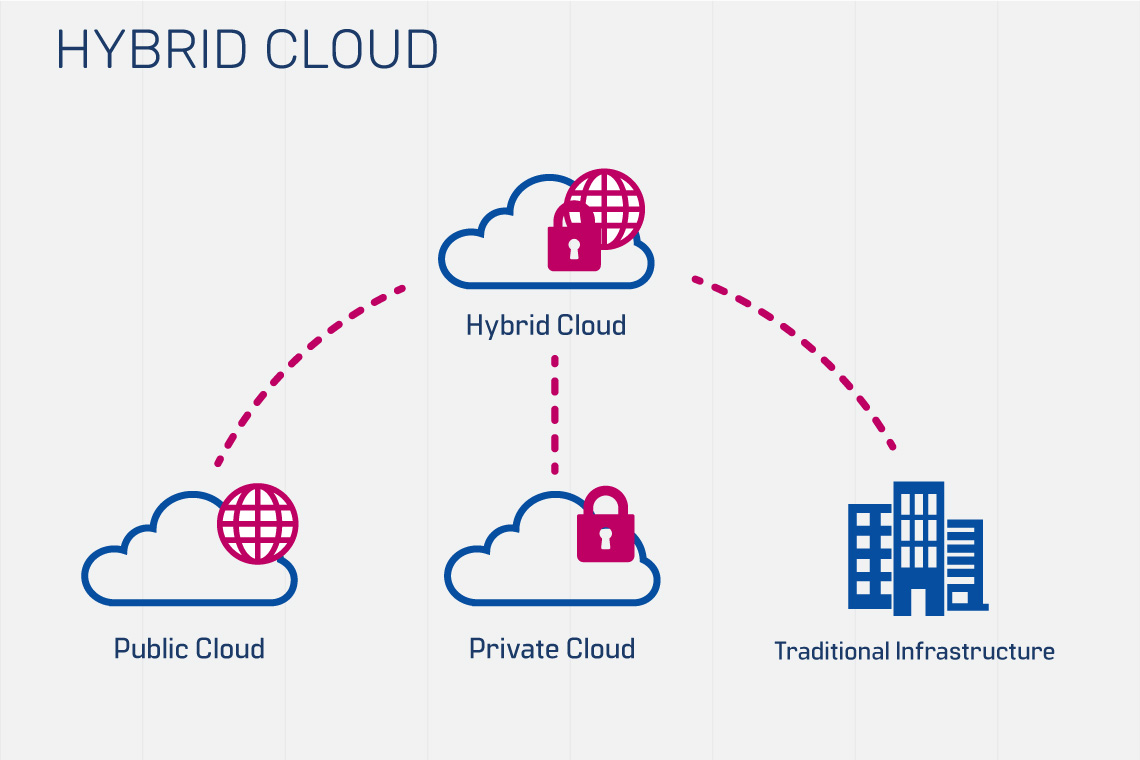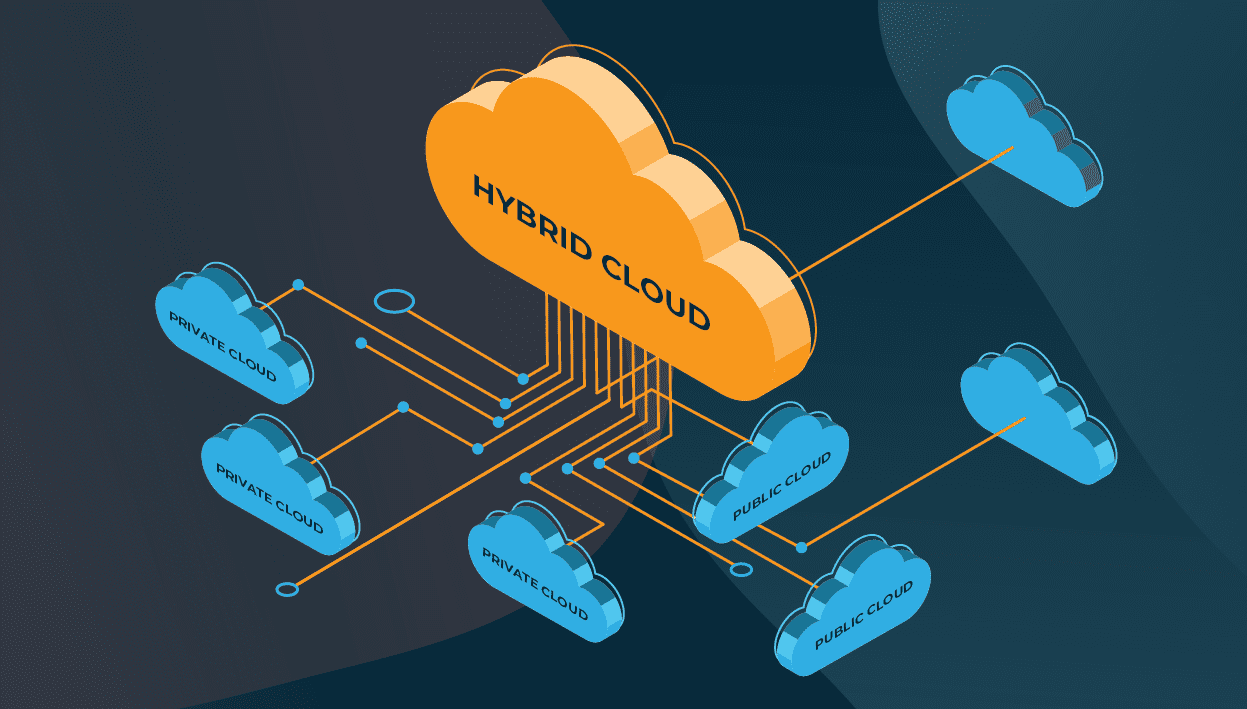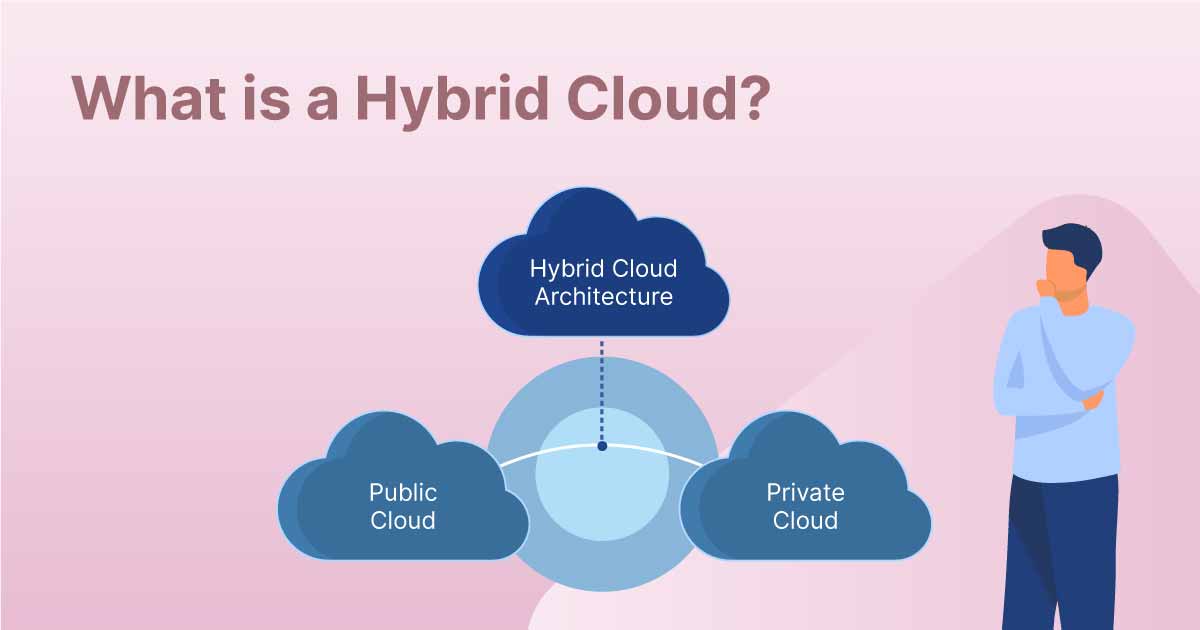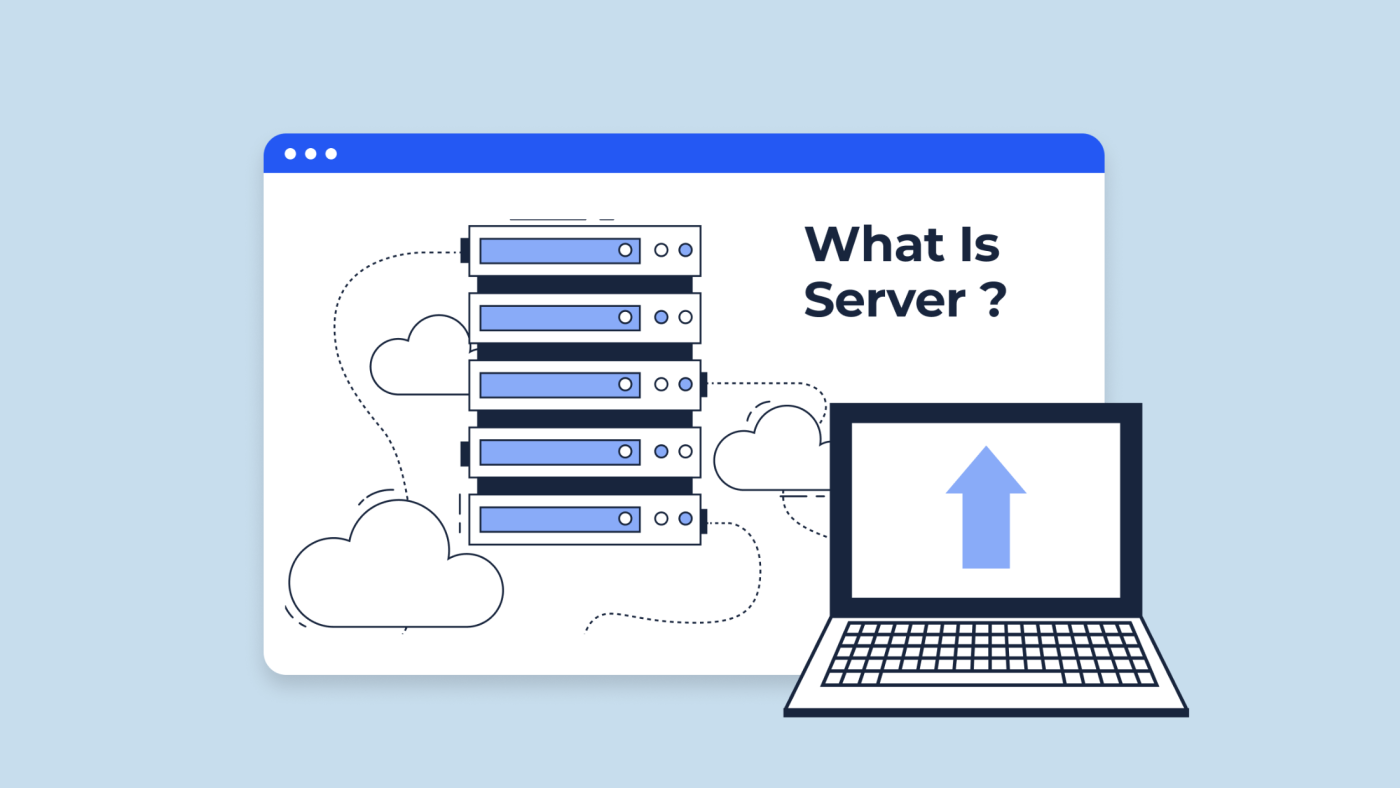Hybrid cloud is one of the most talked-about technologies in the IT industry. With its ability to combine the best of both worlds – public and private clouds – it has become a game-changer for businesses of all sizes. In simple terms, hybrid cloud refers to a computing environment that combines on-premise infrastructure with public cloud services. This allows organizations to leverage the benefits of both environments while addressing any concerns regarding security, compliance, and scalability.
As more and more businesses shift towards a hybrid cloud approach, it is important to understand its nuances, benefits, and challenges. In this comprehensive guide, we will delve into the world of hybrid cloud and cover everything you need to know about this revolutionary technology.
What is Hybrid Cloud?
Definition
Hybrid cloud, also known as hybrid IT, is a combination of public and private cloud environments. It allows organizations to store and manage their data and applications on a combination of on-premise infrastructure, private cloud, and public cloud services. In simpler terms, it is the integration of two or more clouds, forming a single, unified computing environment.

Hybrid cloud, also referred to as hybrid IT, integrates both public and private cloud infrastructures
How does it work?
Hybrid cloud works by connecting the on-premise infrastructure with the public cloud through a secure encrypted tunnel. This connection enables businesses to use the public cloud for non-sensitive operations while keeping their critical data and applications on-premise. The hybrid cloud infrastructure is managed through a central management platform, which allows administrators to monitor and control all aspects of the hybrid environment.
Types of Hybrid Cloud
There are two main types of hybrid cloud – vertical and horizontal.
- Vertical hybrid cloud refers to the integration of multiple cloud services from the same provider. For example, using a combination of Amazon Web Services (AWS) and Amazon Elastic Compute Cloud (EC2) for storage and computing needs.
- Horizontal hybrid cloud is a combination of multiple cloud services from different providers. Organizations can mix and match different cloud providers such as Google Cloud, Microsoft Azure, and IBM Cloud to meet their specific needs.
Benefits of Hybrid Cloud
The hybrid cloud offers several advantages for businesses of all sizes. Let’s look at some of the key benefits that have made hybrid cloud one of the most sought-after technologies in recent years.

The hybrid cloud presents numerous benefits for businesses regardless of their size
Cost Efficiency
One of the primary reasons why organizations opt for hybrid cloud is cost efficiency. By combining the on-premise infrastructure with public cloud services, businesses can reduce capital expenditures on hardware and software. They only pay for the resources they use on the public cloud, eliminating the need for maintenance costs and upgrades associated with on-premise infrastructure.
Moreover, with the ability to scale up or down based on demand, businesses can save a significant amount of money by avoiding overprovisioning of resources. The cost-efficiency of hybrid cloud has made it an attractive option for small and medium-sized businesses that have limited budgets.
Scalability
Scalability is another key advantage of hybrid cloud. Businesses can scale their resources up or down based on changing demands, without the need to invest in additional hardware or infrastructure. This allows organizations to handle sudden spikes in traffic without any disruptions, improving the overall user experience.
Moreover, as the public cloud providers offer a nearly unlimited amount of resources, businesses can easily add more computing power or storage capacity to meet their growing needs. This level of flexibility and scalability has made hybrid cloud an ideal solution for businesses with fluctuating demands.
Flexibility
Flexibility is one of the biggest selling points of hybrid cloud. By combining private and public cloud environments, businesses can mix and match different services to meet their specific needs. For example, organizations can store their sensitive data on their private cloud while leveraging the cost-efficient public cloud for non-sensitive operations.
Furthermore, hybrid cloud also offers the flexibility to move workloads between different environments as needed. This allows businesses to choose the most suitable environment for their applications and data without being constrained by the limitations of a single cloud provider.
Security and Compliance
Security and compliance are major concerns for businesses when it comes to moving their data and applications to the cloud. With hybrid cloud, organizations can keep their sensitive data and critical applications on their private cloud, which is under their direct control. This provides an extra layer of security and control over the data, ensuring compliance with industry regulations and standards.
Additionally, public cloud providers have strict security measures in place, providing an added layer of protection for businesses using their services. This combination of private and public clouds ensures that organizations can maintain a secure and compliant environment for their data and applications.
High Availability
High availability is crucial for businesses, as any downtime can result in significant financial losses and damage to brand reputation. The hybrid cloud offers high availability by allowing organizations to store their data and applications on both on-premise infrastructure and the public cloud. In case one environment experiences an outage, businesses can still access their resources from the other environment, ensuring minimal disruption to operations.
Moreover, hybrid cloud also offers disaster recovery capabilities by replicating data and applications in multiple locations. This allows organizations to quickly recover from any disasters or outages and maintain business continuity.
Challenges of Hybrid Cloud
While the benefits of hybrid cloud are numerous, there are also some challenges that organizations need to be aware of before implementing it. Let’s explore some of the common challenges associated with hybrid cloud.

Although hybrid cloud offers many advantages, organizations should also consider the challenges before adopting it
Integration
Integrating different cloud environments can be a complex and time-consuming process. It requires expertise and proper planning to ensure smooth integration and communication between different cloud services. Organizations need to have a clear understanding of their needs and choose the right cloud providers to avoid any compatibility issues.
Additionally, businesses also need to ensure proper management and monitoring of the hybrid environment to avoid any disruptions or performance issues.
Data Management
Data management can be a significant challenge in hybrid cloud environments. As data is spread across multiple locations, organizations must have the right tools and processes in place to manage and secure it effectively. This includes data backup, encryption, and disaster recovery plans to ensure data consistency and availability at all times.
Organizations must also have a clear understanding of who has access to what data and ensure compliance with industry regulations and standards.
Control and Governance
Control and governance can become a concern in hybrid cloud environments as businesses need to carefully monitor and manage their workloads and resources across different clouds. This requires proper governance policies and procedures to ensure efficient resource allocation and cost management.
Moreover, with multiple cloud providers, organizations may also face challenges in maintaining consistent control and visibility over their entire infrastructure.
Skill Gap
Implementing and managing a hybrid cloud environment requires specialized skills and expertise. With the rapid pace of technology advancements, organizations may struggle to keep up with the latest tools and techniques required for hybrid cloud management. As a result, businesses may need to invest in training their teams or hire external experts to manage their hybrid environment effectively.
Vendor Lock-In
As organizations rely on multiple cloud providers for their hybrid environment, vendor lock-in can become a concern. This refers to the situation where businesses find it challenging to switch to a different provider due to dependencies and compatibility issues. Organizations need to carefully evaluate their needs and choose their cloud providers to avoid any potential vendor lock-in situations.
Best Practices for Implementing Hybrid Cloud
Implementing hybrid cloud requires proper planning, strategy, and execution. Here are some best practices that organizations should follow to ensure a successful hybrid cloud deployment.
Assess Your Needs
Before moving to a hybrid cloud environment, organizations must have a clear understanding of their needs and objectives. They must assess their workloads and data to determine which resources are best suited for public and private clouds. This will help them choose the right cloud providers and services that align with their business goals.
Choose the Right Cloud Provider
Choosing the right cloud provider is crucial for the success of a hybrid cloud implementation. Businesses must consider factors such as security, cost, performance, and scalability before finalizing their cloud provider. It is also essential to consider a provider’s track record, expertise, and support capabilities to ensure a smooth transition and ongoing management of the hybrid environment.
Plan for Integration
Integration is a key aspect of a hybrid cloud environment, and proper planning is necessary to ensure its success. Organizations must have a clear understanding of how different cloud services will communicate with each other and how they will integrate with their existing infrastructure. This requires a well-defined strategy and expertise to avoid any compatibility issues or disruptions in operations.
Ensure Data Consistency
Data consistency is vital in hybrid cloud environments as data can move between different clouds. Businesses must have proper data management processes in place to ensure that data is consistent and available at all times. This includes data backup, encryption, and disaster recovery plans to protect against any data loss.
Train Your Team
Implementing a hybrid cloud environment requires specialized skills and expertise. Organizations must invest in training their teams or hiring external experts to manage the hybrid environment effectively. This will not only ensure smooth operations but also help businesses stay updated with the latest technologies and tools in the ever-changing cloud landscape.
Real-World Examples of Hybrid Cloud
Several leading organizations have successfully implemented hybrid cloud environments and are reaping its benefits. Let’s take a look at some real-world examples of companies that have embraced hybrid cloud.
Netflix
Netflix, one of the world’s largest media streaming services, relies heavily on hybrid cloud infrastructure. It uses AWS for its non-sensitive operations, such as encoding and content delivery, while keeping its critical data and applications in-house. This allows Netflix to handle massive amounts of traffic efficiently while maintaining control over its sensitive information.
Airbnb
Airbnb, a popular online marketplace for rental properties, has also adopted a hybrid cloud approach. The company uses its private cloud for its core operations, such as reservation management and user authentication, while relying on AWS for its website and database hosting needs. This combination of public and private clouds has helped Airbnb to scale its resources based on demand and maintain high availability for its users.
Pinterest, an image-sharing social media platform, uses a hybrid cloud model to improve its performance and scalability. By combining Google Cloud Platform (GCP) with its private cloud, Pinterest has been able to achieve faster page load times, better disaster recovery capabilities, and improved resource utilization.
Spotify
Spotify, a leading music streaming service, has also adopted a hybrid cloud approach for its infrastructure needs. The company uses AWS’s public cloud for non-sensitive operations, such as data analytics and content delivery, while keeping its sensitive data and applications on its private cloud. This has allowed Spotify to reduce costs and improve performance by leveraging the benefits of both environments.
Coca-Cola
Coca-Cola, one of the world’s largest beverage companies, has also embraced hybrid cloud technology. The company uses Azure as its primary cloud provider and leverages the platform’s scalability and global reach to support its operations in over 200 countries. Coca-Cola also uses a combination of private and edge computing to improve the performance and availability of its services.
Future of Hybrid Cloud
The popularity of hybrid cloud is expected to continue growing in the coming years. Here are some predictions and trends that will shape the future of hybrid cloud.
Predictions and Trends
- According to Gartner, by 2023, over 90% of organizations will rely on multiple cloud services, making hybrid cloud the most common enterprise strategy.
- IDC predicts that by 2022, the global market for hybrid cloud management will reach $1.4 billion, highlighting the growing demand for tools and services to manage hybrid environments.
- With advancements in technology, we can expect the barrier between public and private clouds to become more blurred, making hybrid cloud an even more seamless experience for businesses.
Impact on Businesses
As more and more businesses shift towards a hybrid cloud approach, it is expected to have a significant impact on the industry.
- Hybrid cloud will enable businesses to embrace digital transformation by providing them with the flexibility, scalability, and cost-efficiency needed to stay competitive in the market.
- Organizations will be able to leverage emerging technologies, such as artificial intelligence (AI), machine learning, and edge computing, to drive innovation and improve their operations.
- The growing trend of remote work and virtual events is expected to further accelerate the adoption of hybrid cloud as businesses look for ways to improve collaboration and efficiency.
Emerging Technologies in Hybrid Cloud
Several emerging technologies are expected to have a significant impact on the future of hybrid cloud.
- Edge computing will become increasingly important as more businesses look for ways to reduce latency and improve performance. With edge computing, organizations can process and store their data closer to the source, ensuring faster response times and reduced bandwidth costs.
- AI and machine learning will play a crucial role in optimizing hybrid cloud environments. These technologies will help organizations make smarter decisions by analyzing vast amounts of data and making predictions based on past trends.
- Blockchain technology is also expected to gain traction in hybrid cloud environments. By providing secure and transparent transactions, blockchain can help businesses ensure data integrity and trust between different cloud environments.
Conclusion
Hybrid cloud technology has revolutionized the way businesses approach their IT infrastructure. Its ability to combine the best of both worlds – public and private clouds – has made it an attractive option for organizations of all sizes. In this comprehensive guide, we covered everything you need to know about hybrid cloud – from its definition and types to its benefits, challenges, and future trends.
As we move towards a more digital world, the demand for hybrid cloud will continue to grow, making it essential for businesses to understand and embrace this game-changing technology. By following best practices and learning from real-world examples, organizations can successfully implement and manage their hybrid cloud environment, driving innovation and growth for years to come.



